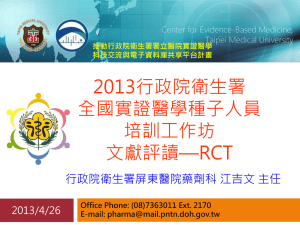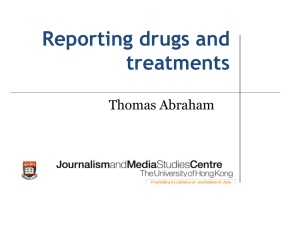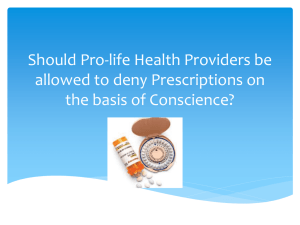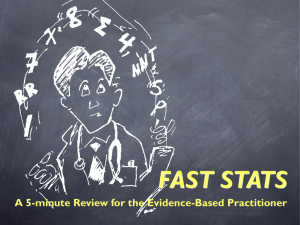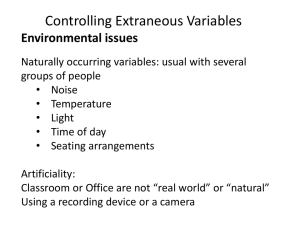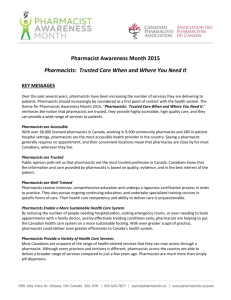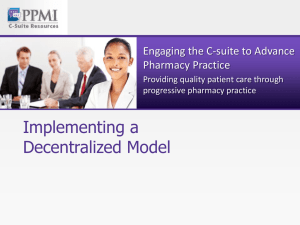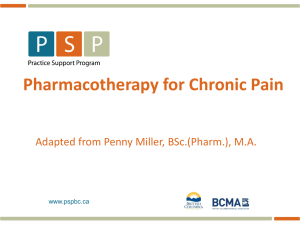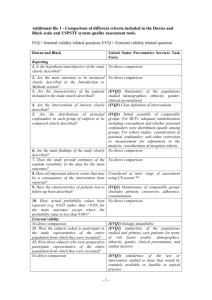Preceptor Skills: Journal Club
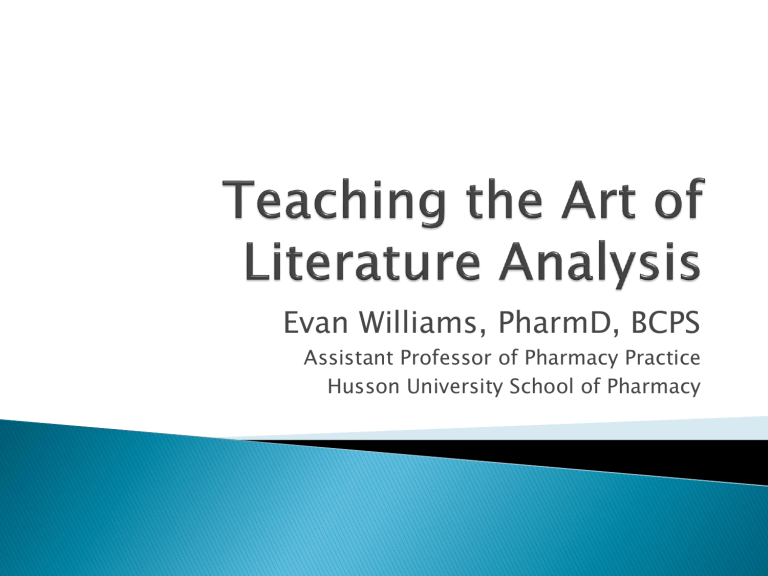
Evan Williams, PharmD, BCPS
Assistant Professor of Pharmacy Practice
Husson University School of Pharmacy
Why literature evaluation is important and why people hate it
How to make literature less terrible for students and preceptors
What parts of the study are important and what is beyond essential
Students should focus on the statistical methods used as it relates to internal validity of the findings more so than the external validity of the study when discussing journal articles.
True or False
Journal Article Presentations should a) Focus on an area of practice relevant to the practice site b) Tie into some other project or problem at the practice site c) Be flexible enough to fit into the amount of time a practice site or preceptor can devote to the assignment d) All of the above
The following study for gorillastatin produced the following results after 5 years of follow up. Based on the results in the table, about how many patients do I need to treat with gorillastatin for 5 years to prevent one CAD event?
a) 5 b) 8 c) 12 d) 16
Discuss reasons literature evaluation is an essential skill for all pharmacists
Identify components of a quality “journal club” format
Describe ways to make student literature review useful to your practice
Briefly distinguish between useful and confounding statistical methods and demonstrate ability to calculate NNT and NNH
Essential skill for any clinician
Everyone wants to follow “evidence-based medicine”
◦ How do you know if recommended treatment is evidence based?
Needed to keep up with emerging therapies
◦ New drugs
◦ New guidelines
If you don’t do this, the next generation of pharmacists will be followers instead of leaders regarding drug therapy
Dry, boring reading
◦ 50 Shades of Primary Literature?
Time considerations
Perceived lack of utility
◦ This is all summarized in Pharmacists’ Letter anyway
Fear of statistics
◦ What the devil is the difference between a t-test, ftest, and a z-test, anyway?
There is nothing “clubby” about it
◦ We force them to present some random article and belittle them for not knowing stuff we never taught them
It is detached from other learning outcomes
◦ “Pick a recent article that has something to do with your internal medicine rotation.”
◦ They pick terrible articles because of this
They lack good examples of what we are expecting
Decide what the desired learning outcome is
◦ Presentation skills?
◦ A refined, grammatically perfect handout?
◦ Identify all of the trial’s strengths and weaknesses?
◦ Distinguish important clinical implications of the trial presented?
Once the outcome is identified, make sure this is communicated to the student
Selection of Articles
◦ Student vs. Preceptor Selection
◦ Ensure that the article relates to something happening on rotation!
This will make it relevant and useful
◦ Type of Article
Original Research
Review Article
Guideline Evaluation
Selection of Articles
◦ Good vs. Bad Articles
Clinical vs. Surrogate Outcomes
Sketchy statistics
Primary outcomes vs. Secondary outcomes
◦ New vs. Old
Older articles aren’t bad or irrelevant!!
If the student doesn’t know it, it is a learning opportunity
Identify what you’d like the student to present
◦ Background
Do you need this?
Needs to be quick
◦ Methods
Brief
These are fairly standard
Breeze through the stats
Identify what you’d like the student to present
◦ Results
Best presented in a table format
Identify primary vs secondary outcomes
Distinguish between clinical and statistical significance
Does power matter?
Calculate NNT and NNH
Identify what you’d like the student to present
◦ Discussion should take the most time
Is the outcome valid based on the test used?
Confounders
Are they looking at the right groups of patients?
Influence of uncontrolled variables?
Statistical vs. clinical significance?
Does this change my practice?
◦ Conclusions
Do you agree with the author’s conclusion?
Presentation Setting
◦ Big time presentation and roast?
◦ Conversational?
◦ Panel Discussion?
◦ CE style?
Do what makes sense for your practice site!
◦ Make this useful to you
Give students enough time
◦ Check in to make sure progress is being made
◦ Suggest addressing questions prior to the presentation to improve the quality of the presentation
Read the article!
Show the student a clear example of a good handout to follow
◦ Many are available, so pick one that you like
Students tend to do better with bullet points
Make them create their own tables
In order to properly evaluate the student’s critique, you need to have identified the key points that should have pointed out
◦ What are the results?
◦ Are the results valid?
◦ How can I use the results in my practice?
Any statistically significant differences?
◦ p-value vs confidence intervals
Little p-values don’t make results more significant
Confidence intervals can give an impression of how precise the results are
Confidence intervals that cross unity are not significant
◦ Clinical significance?
Number Needed to Treat
◦ Good way to quantify clinical significance
◦ 1/difference in the event rate between groups
25 of 500 people in the placebo group died - (5%)
10 of 550 people in the drug group died – (1.8%)
The difference between the groups is 3.2%, or 0.032
1/0.032 = 31.25 ~ 31
If I treat 31 people with the drug, I will prevent one death
◦ Compare this to the Number Needed to Harm
Number Needed to Harm
◦ Same calculation, but for adverse events
10 of 500 people had major bleeding in the placebo group – (2%)
22 of 550 people had major bleeding in the drug group – (4%)
The difference between the groups is 2%, or 0.02
1/0.02 = 50
If I give 50 people the drug, I will cause 1 major bleed
◦ Does the risk vs benefit ratio seem reasonable?
Was the primary endpoint clearly stated and reported?
◦ Was it relevant?
◦ Surrogate vs clinical endpoints
◦ Composite endpoints
Was the designed to reveal the primary endpoint?
◦ Powered enough to detect a difference if one wasn’t found?
◦ Does the discussion focus on subgroup analyses?
Where the right people included?
◦ Intent to Treat (ITT) or Per Protocol Analysis?
◦ Inclusion and exclusion criteria
Do they control for confounders?
Do they limit external validity?
Was bias effectively dealt with?
◦ Blinding
◦ Valid control groups
Placebo vs active control?
NNT vs NNH
Are the patients studied similar to my patients?
How does this evidence jive with other studies regarding the same subject?
Is this study important enough to shift clinical practice?
New Drugs
◦ What studies got this approved?
◦ Who was looked at?
◦ Side effect profiles?
New Guidelines
◦ Check the references
◦ Things that have strong/low evidence
Things you don’t know/always get questions about
◦ When is aspirin indicated?
◦ Evidence that vaccines don’t cause autism?
◦ Does LDL really correlate with MI?
◦ Why do we still use warfarin?
Pharmacists need to be able to evaluate literature
We should be showing students why this is important
Make sure journal article presentations focus on preparing pharmacists that can critically evaluate literature
◦ Presentation style, format, handouts, length can all vary and should be adapted to the practice site
Focus on the key issues within the studies presented
◦ Don’t get bogged down in statistics
◦ Consider the clinical impact
Make the exercise beneficial for you and the student
Students should focus on the statistical methods used as it relates to internal validity of the findings more so than the external validity of the study when discussing journal articles.
True or
False
Journal Article Presentations should a) Focus on an area of practice relevant to the practice site b) Tie into some other project or problem at the practice site c) Be flexible enough to fit into the amount of time a practice site or preceptor can devote to the assignment d)
All of the above
The following study for gorillastatin produced the following results after 5 years of follow up. Based on the results in the table, about how many patients do I need to treat with gorillastatin for 5 years to prevent one CAD event?
a) 5 b) 8 c) 12 d) 16
Questions?
Thank you!
